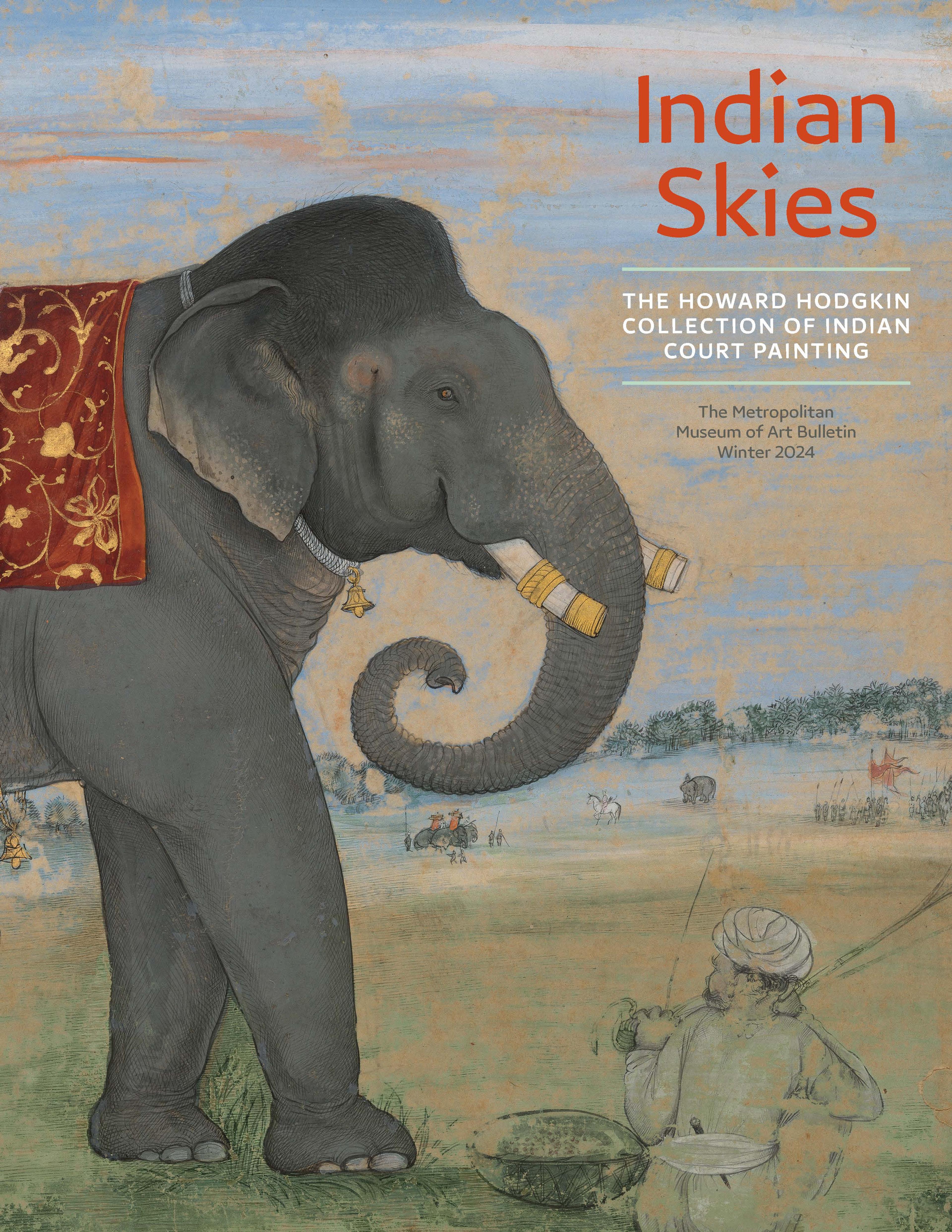Maharaja Raj Singh in a Garden Arcade
This highly personal portrait of Raj Singh of Sawar (r. 1705–30) shows him in full profile, as if he is presenting himself at a palace balcony window (jharoka) for a public audience. Here, however, the arched terrace at which he sits resplendently is set in a private garden overlooking a grassy landscape populated only by waterfowl. In this private inner world, Raj Singh holds a flower bud in his raised hand, an allusion to his aesthetic accomplishments. He is attended by two women, one holding a tray with slender glass bottles of rosewater and the other waving a fan of peacock feathers. The arcade is painted with floral designs in the style of Mughal pietra dura (hardstone inlay), and a Mughal-style carpet is draped over the terrace balustrade, adding a richness to the portrait.
Artwork Details
- Title: Maharaja Raj Singh in a Garden Arcade
- Date: ca. 1710–15
- Culture: India, Rajasthan, Sawar
- Medium: Opaque watercolor, gold and silver on paper
- Dimensions: Image: 11 7/16 × 15 7/16 in. (29 × 39.2 cm)
Framed: 14 3/8 × 20 5/8 × 3/4 in. (36.5 × 52.4 × 1.9 cm) - Classification: Paintings
- Credit Line: Howard Hodgkin Collection, Purchase, Gift of Florence and Herbert Irving, by exchange, 2022
- Object Number: 2022.219
- Rights and Reproduction: Image © Ashmolean Museum, University of Oxford
- Curatorial Department: Asian Art
More Artwork
Research Resources
The Met provides unparalleled resources for research and welcomes an international community of students and scholars. The Met's Open Access API is where creators and researchers can connect to the The Met collection. Open Access data and public domain images are available for unrestricted commercial and noncommercial use without permission or fee.
To request images under copyright and other restrictions, please use this Image Request form.
Feedback
We continue to research and examine historical and cultural context for objects in The Met collection. If you have comments or questions about this object record, please complete and submit this form. The Museum looks forward to receiving your comments.
